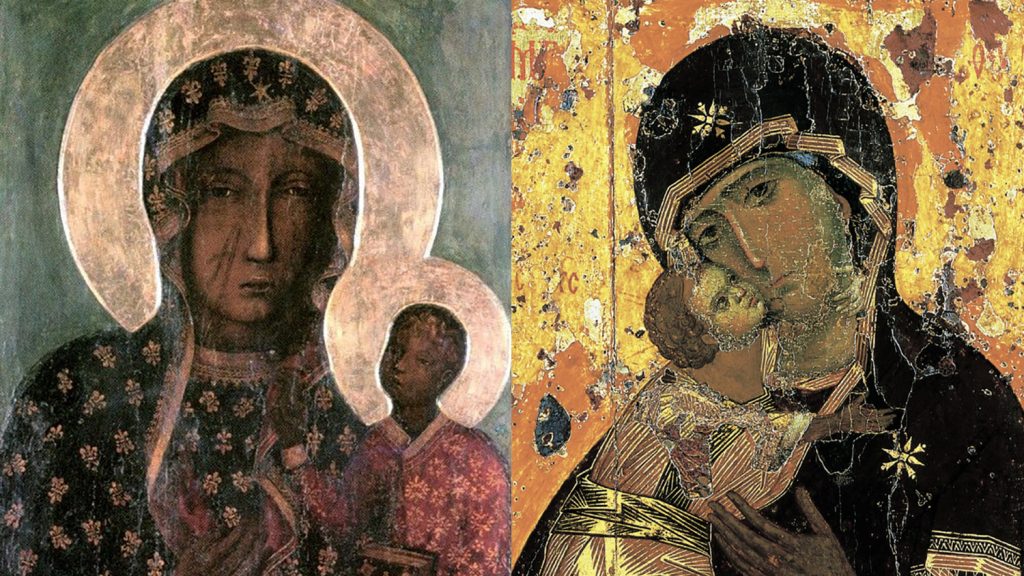26 August is the feast day of two celebrated images of the Virgin Mary. The Black Madonna of Częstochowa (above left), the icon of Catholic Poland, attracts several million pilgrims during August each year. The two slashes across the cheek of the Madonna were inflicted by robbers 600 years ago. During the Battle of Warsaw in 1920, the Madonna is said to have appeared on the battlefield, inflicting a decisive defeat on the invading Russian Red Army.
Meanwhile, the Virgin of Vladimir (above right), the icon of Orthodox Russia, is celebrated for protecting Moscow from attack by Tamerlane and other khans. A Second World War legend has it that Stalin had the icon flown in a circle around Moscow to protect it from invasion by Hitler. Both icons have been endlessly reproduced as devotional images for believers around the world.
Zara Yaqob, the somewhat severe reforming Emperor of Ethiopia, whose house claimed descent from King Solomon and the Queen of Sheba, died today in 1468. He built churches, wrote theological books, executed heretics (including some of his own children), and resolved a long-running dispute over whether Saturday or Sunday – or both – should be observed as the sabbath. It is claimed he was Ethiopia’s greatest ruler in 1,000 years.
‘He taught and prescribed to be taught the Credo, the Paternoster, the Decalogue and the six words of the Gospel, the belief in one only God in three persons, the spiritual birth of the Son from the Father without mother, and the second birth of the Son issued from Mary without father. All these beliefs and these practices, as well as others of a similar nature, were taught by our King.’ The Chronicle of the Emperor Zara Yaqob, translated by Richard Pankhurst
Albino Luciani was elected Pope by 99 votes to 12 this evening in 1978. He told the cardinals who had elected him: ‘May God forgive you for what you have done in my regard.’ He took the name John Paul I. George and Ringo were cool with the idea. He was the first Pope in over 1,000 years to be the first of his name. Thirty-three days later, John Paul’s short reign came to an abrupt end when he was found dead in his bed. He was followed by Pope John Paul II, in the ‘year of three Popes’.
Today in 1492, the Spanish cardinal Rodrigo Borgia was installed as the new Pope, taking the name Alexander VI. One of the least suitable candidates for Pope in history, Rodrigo had already fathered several children by different women, and his reign as Pope was marked by plausible accusations of orgies, poisoning, bribery and incest. The Borgias, including Rodrigo’s children Lucrezia and Cesare, have frequently been depicted in novels, movies and on TV, and in video games such as Assassin’s Creed.
Images: Public domain
